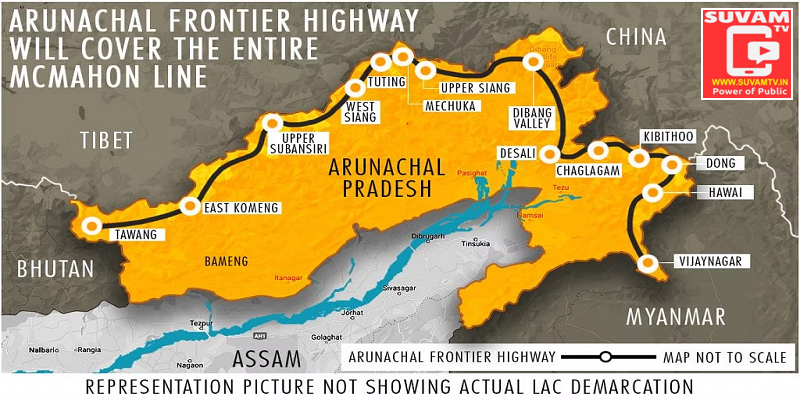Arunachal Pradesh has “always been” and will “always be” an integral part of India.

On February 20th 1987 Arunachal Pradesh became a full-fledged state of India as the policy of giving the tribal regions their separate identity, as parts of India, had by then become national policy.
Formerly known as the North East Frontier Agency (from the British colonial era), the area was part of Assam until it was made the Indian union territory of Arunachal Pradesh in 1972, and in 1987 it became an Indian state.
China has again incorporating India’s integral regions such as Arunachal Pradesh, and Aksai Chin in their latest edition of the map released on Monday.
China has now staked claims on parts of India’s northeastern state of Arunachal Pradesh, arguing that these locations were part of greater Tibet. A desperate Beijing had in April this year unilaterally “renamed” as many as 11 Indian locations, which included names of mountain peaks, rivers and residential areas.
India’s northeastern state of Arunachal Pradesh, which China considers to be part of Tibet, and where the two countries fought a full-scale border war in 1962. The second was Aksai Chin, a high-altitude strategic corridor linking Tibet to western China.
Global Times so-called standard map released included the disputed areas including Arunachal Pradesh, Aksai Chin region, Taiwan and the disputed South China Sea under their territory. This map is compiled based on the drawing method of national boundaries of China and various countries in the world.

The Chinese government said it would “standardise” the names of 11 places in Arunachal Pradesh. At that time, it showed parts of Arunachal inside the southern Tibetan region which the CCP government refers to as Zangnan.
India, on several occasions, staunchly asserted that the state of Arunachal Pradesh has “always been” and will “always be” an integral part of the country. The latest claims came nearly ten days before the much-awaited G20 Summit in New Delhi, where the Chinese President was invited among the 42 other state heads.
Meeting at BRICS Summit
Prime Minister Narendra Modi, who was in South Africa’s national capital Johannesburg earlier last week, for the much-anticipated BRICS Summit, held a brief interaction with the Chinese President. According to the Ministry of External Affairs, both leaders held talks on the border dispute.
Last month, the ministry confirmed that PM Modi and the Chinese President had discussed border issues when they met briefly at the Bali Summit.
